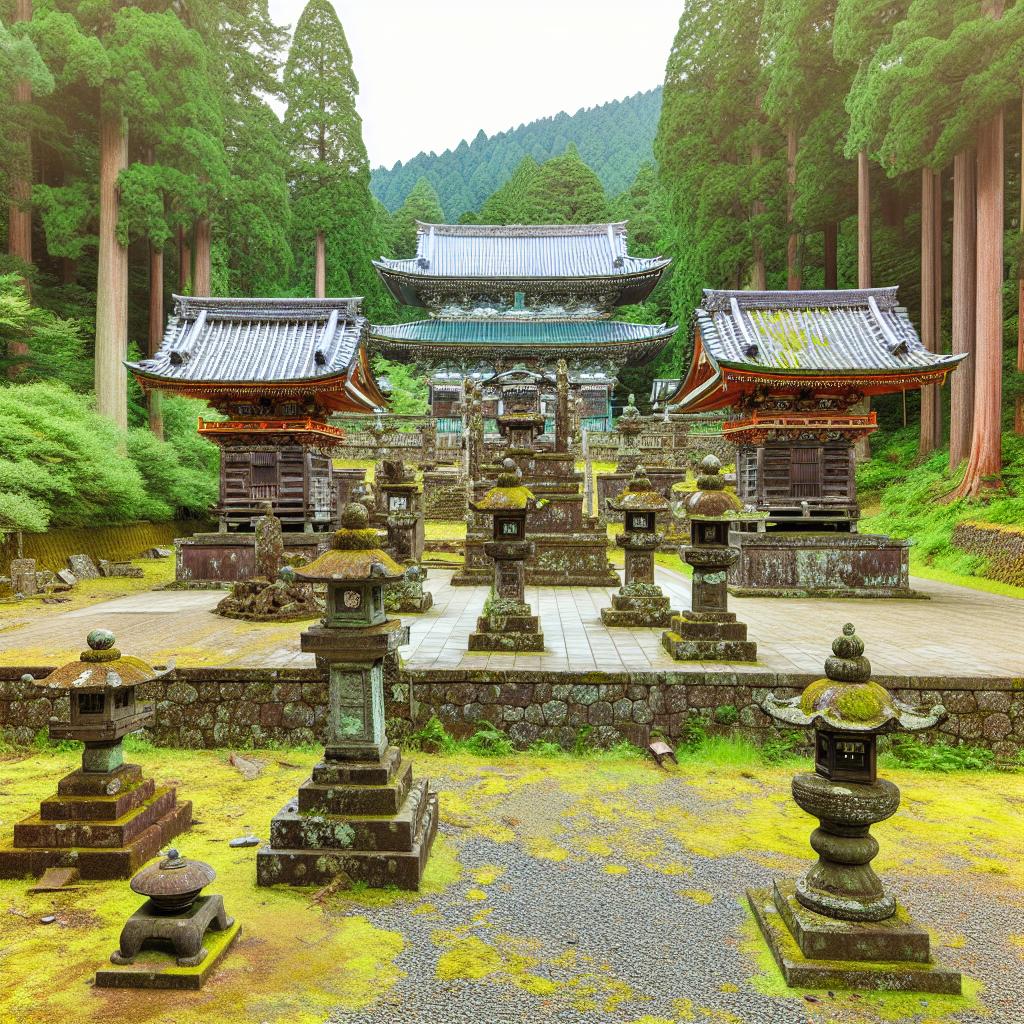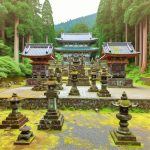Introduction to Nikko’s Ancient Temples
Nikko, a city located in Japan’s Tochigi Prefecture, is renowned for its historic temples and shrines. Nestled amidst lush mountains and vibrant natural scenery, these architectural masterpieces often hold the distinction of being a UNESCO World Heritage site. Visitors are welcomed by the harmonious blend of architecture and nature, reflecting Japan’s spirituality and artistic heritage. The temples’ designs mirror ancient Japanese concepts of beauty, balance, and harmony, showcasing intricate craftsmanship and attention to detail.
The Significance of Nikko
The significance of Nikko lies in its historical and religious importance. Since ancient times, Nikko has been revered as a sacred site, attracting Buddhists and Shinto believers from all over Japan. The religious structures within Nikko are a testament to the cultural integration and coexistence of these two prominent Japanese religions. The temples and shrines have served not only as places for worship but also as focal points for community gatherings, celebrations, and spiritual contemplation. Their significance extends beyond their immediate religious functions, embedding themselves into the cultural and historical fabric of Japan.
Tokugawa Ieyasu’s Legacy
At the heart of Nikko’s historical importance is the Tosho-gu Shrine, dedicated to Tokugawa Ieyasu, the influential founder of the Tokugawa shogunate. Constructed in the early 17th century at the behest of Tokugawa Ieyasu’s grandson, the shrine is celebrated for its elaborate decoration and opulence. It represents a unique departure from the restrained aesthetics typically found in Japanese religious architecture. The shrine is a lavish showcase of craftsmanship, with vibrant colors, intricate woodwork, and gold leaf embellishments highlighting Japan’s Edo period’s artistic achievements.
Key Temples and Shrines
Nikko is home to several key temples and shrines that are crucial in understanding its cultural and historical importance:
Tosho-gu Shrine
The Tosho-gu Shrine is widely recognized as the final resting place of Tokugawa Ieyasu, an influential figure in Japanese history. One of its most striking features is the Yomeimon Gate, often referred to as the “Gate of Sunlight,” which is adorned with over 500 carvings and gold embellishments. The detailed craftsmanship showcases an array of mythological beasts, dragons, and scenes from Chinese mythology, reflecting a blend of cultural influences.
Rinno-ji Temple
Founded by the revered Buddhist monk Shodo Shonin in the 8th century, the Rinno-ji Temple occupies a central place in Nikko’s religious landscape. The temple’s Three Buddha Hall, known as the Sanbutsudo, houses impressive gold-leaf structures representing Amida, Senju-Kannon, and Bato-Kannon. These representations are not only breathtaking to behold but also deeply symbolic, embodying Buddhist teachings and philosophies.
Futarasan Shrine
The Futarasan Shrine is believed to hold the spirits of the Nikko Mountains and is a prime example of Shinto architecture blended harmoniously with the surrounding natural beauty. Established in 782 by Shodo Shonin, the shrine’s serene setting among towering cedar trees creates a tranquil atmosphere conducive to meditation and spiritual reflection. Visitors can explore various smaller sub-shrines and sacred spaces within the complex.
Visiting Nikko
When planning a visit to Nikko’s ancient temples, it’s advisable to schedule ample time to appreciate the exhaustive details and rich symbolism of each site. The journey through these sacred spaces offers a profound encounter with Japan’s spiritual and cultural legacy. The temples can be explored year-round, and each season provides a unique setting to experience their beauty. In spring, cherry blossoms add a fleeting but magnificent touch of color, while autumn brings a tapestry of fall foliage in vivid reds and oranges that complement the historic structures.
For those keen to delve deeper into planning their visit, more information can be found by exploring resources about Nikko.
Conclusion
Nikko’s ancient temples not only stand as crucial cultural and historical monuments, but they also function as gateways to understanding Japanese religious practices, architectural styles, and artistic heritage. Their historical significance is a reminder of Japan’s evolving spiritual landscape and socio-political narratives. Visiting these awe-inspiring sites provides an unparalleled opportunity to experience the beauty and grandeur of Japan’s past, allowing one to step back in time and soak in the splendor of a bygone era. The experience enriches one’s appreciation of Japan’s enduring legacy, rooted in its exquisite balance of nature, art, and spirituality.













